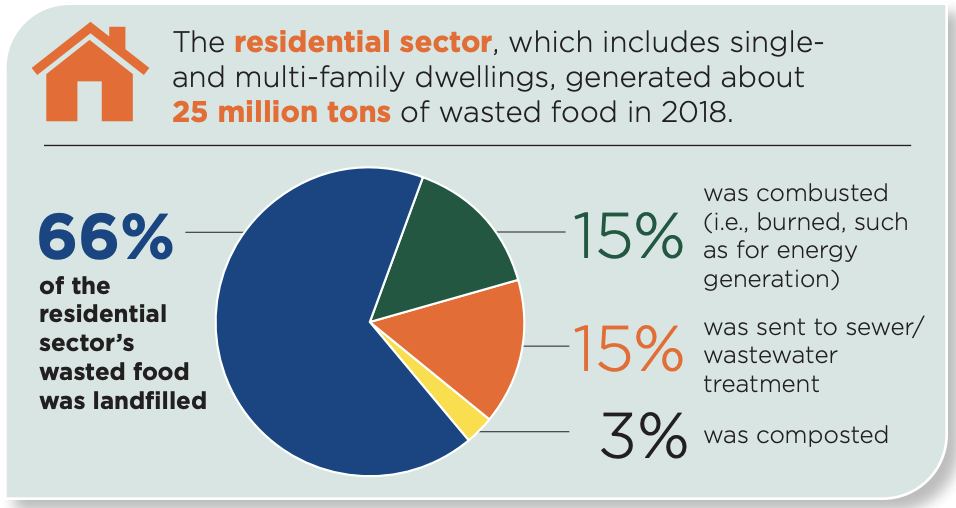“What happens to poor people is never divorced from the actions of the powerful… control of lives is related to control of land, systems of production, and the formal political and legal structures in which lives are enmeshed.” – Harvard graduate, medical and poverty anthropologist, Dr. Paul Farmer.
The same political and social systems that continue to pollute the earth with unethical development and rampant demolition are simultaneously responsible for perpetuating an economic hierarchy that disproportionately damages poor communities for the benefit and comfort of the affluent (Brady 2017).
Despite the frequent hegemonic portrayal of poverty as a consequence of laziness, in actuality, poverty is the result of numerous deliberate efforts to perpetuate the absence of power that initially forces a person into poverty. One out of every 10 people in Greenville, South Carolina live in poverty; Greenville is also in the top 10 places in the country with difficult or no economic mobility (United Way of Greenville).
The impacts of burning fossil fuels as the primary source of global energy disproportionately expose low-income, disadvantaged communities to hazardous waste and pollutants, despite the low proportion of energy that is consumed in those same areas. Anthropogenic air and water pollution starts and ends in poor communities, both within local city-level settings, and globally such as in Yemen and southeast Asia (Al-Ariki 2006). The poor citizens of every nation are at the greatest locational risk for disaster and adverse health consequences (Hekmatpour 2022).
Exposure to neurotoxic chemicals in early life and prenatal environmental conditions can cause permanent changes in brain structure, chemistry, behavior, and development (Weiss 2006). In addition to an array of confounding factors, the most significant risk factor for developing cancer, obesity, heart disease, and asthma is simply being poor for extended periods, due to the various consequences of food instability and prolonged stress on immunicity (Cellini 2009). Poverty is also the most significant indicator of childhood health complications, childhood mortality rate, and rates of childhood injury – both unintentional and intentional.
Furthermore, a recent Alabama study indicates that the likelihood of dying from these illnesses, in addition to all medical conditions, is much greater for poor individuals. In some cases, the mortality rate difference among children was more than 30% with an additional 9% increase for every 20 miles further from treatment locations (Hoppmann 2022).
“Where you live should not determine whether you live or whether you die” – Activist and philanthropist Paul David Hewson
As of 2020, the childhood poverty rates were as follows:
16% of children in America (US Census 2020),
22.1% of children in South Carolina (Children’s Trust of South Carolina, 2020),
14.6% of people in Greenville (South Carolina Revenue and Fiscal Affairs Office 2020).
Childhood malnutrition is a severe but frequent consequence of persistent poverty. In a biomedical study of the effects of poverty, Weiss, et. al indicate that malnourishment can make children more prone to worsened mental and functional health, and also contribute to lower academic receptiveness and retention (Weiss 2006). A 1994 study found that the health and educational disparities of poverty are correlated with cognitive deficits in children and an average of 3% lower IQ (Herrnstein and Murray 1994). However, this is not to be misconstrued that poor people are naturally not as smart as their affluent counterparts are. But rather, the physical inability to regularly meet health and safety conditions impacts their ability to perform within systems that are already pre-designed to disadvantage them.
In fact, the Public American Education system policy of funding school districts via local property taxes demonstrates that it is not designed to support the socio-economic mobility of lesser-educated and disadvantaged students. This is why entire states, including South Carolina, Mississippi, and Alabama consistently rank poorly on the scale of National Education Standards. This is an example of the so-called “poverty trap” as described by a political science and public policy professor at Brown University (Allard 2019).
However, the impacts of poverty are not limited to the families and individuals actively experiencing it, but rather our current socioeconomic system will inevitably be the detriment of the Earth’s ecological and geographical health (Rohr 2022). Citizens are not able to take care of the earth until they are confident in taking care of themselves, and thus global sustainability is not achievable without the eradication of poverty.
But what exactly can be done to stop and reverse these centuries-old cycles of poverty? The answer is surprisingly simple: the implementation of sustainable alternatives are a powerful tool of poverty alleviation, starting with the improvement of home efficiency (Paul 2021).
Rather than forcing significant lifestyle alterations or offering financial supplements, community outreach and activism should work alongside poor households to empower them to decide what sustainability efforts are compatible with their pre-existing lifestyle choices. Programs such as Furman’s Community Conservation Corps have proven highly effective at mitigating the elevated base costs of living that prevent economic mobility, especially within the common household. Offering a series of non-invasive sustainable implementations, such as weatherized insulation and high-efficiency light bulbs, would be most beneficially impactful without uprooting the preexisting traditions and lifestyles of these people (Lane 2018).
A prevalent question of concern is: Who are we expecting to pay for these sustainability efforts? Well, the affluent are notorious for their elaborate investments and passive income methods, and yet, they fail to see the social profitability of investing in people and the ethical obligation to lessen the immediate consequences of their actions and choices.
Nonetheless, with the economy in mind, the Ecological Modernization Theory (EMT) evaluates the potential costs of environmental and social crises in comparison to the cost of adopting more sustainable environmental and social systems (Filho 2021). They also evaluate the opportunity costs of employment sectors to conclude that after ecological and social crises have been relatively resolved the economy will be capable of growing without further widening the wealth gap.
Simply, poverty is unstainable. Poverty is not a mere lack of money, but rather a perpetual system established to prevent socio-economic mobility and reinforce cultural-political hierarchy. The worsening global climate conditions are only exacerbating the impacts of poverty, and these consequences are no longer conceptual or hypothetical. People are dying from being poor on a geo-political Earth that was not designed to allow them to live.
“The opposite of poverty is not wealth; the opposite of poverty is enough.” President Emeritus of Compassion International, Dr. Wess Stafford
References
Al-Ariki, A. 20 Mar. 2006. Environment, poverty and sustainability. Yemen Times (Sanaa, Yemen), sec. Health, NewsBank: Access World News, infoweb.newsbank.com/apps/news/document-view?p=AWNB&docref=news/1107E218E0581338. Accessed 22 Sept. 2022.
Allard, S. 2019. Pathways: Poverty Traps. Stanford Center on Poverty and Inequality. https://inequality.stanford.edu/sites/default/files/Pathways_Winter2019_Poverty-Traps.pdf
Brady, D, Finnigan, R, & Hübgen, S. 2017. Rethinking the risks of poverty: A framework for analyzing prevalences and penalties. American Journal of Sociology, 123(3), 740–786. https://doi.org/10.1086/693678
Brookings. April 2022. Lessons from the Village Enterprise development impact bond and beyond. Global Economy and Development. https://www.brookings.edu/events/breaking-the-cycle-of-poverty-through-innovative-finance/
Cellini, S, McKernan S, Ratcliffe, C, et. al. 2009. The dynamics of poverty in the United States: A review of data, methods, and findings. Journal of Policy Analysis and Management, 27(3), 577–605. https://doi.org/10.1002/pam.20337
Children’s Trust of South Carolina. April 2022. Greenville County Child Well-Being Data Profile. https://scchildren.org/resources/kids-count-south-carolina/child-well-being-data-county-profiles/
Filho W, Lovren V, Will M, et. al. 2021. Poverty: A central barrier to the implementation of the UN Sustainable Development Goals, Environmental Science & Policy, vol. 125, 96-104, 2021. https://doi.org/10.1016/j.envsci.2021.08.020.
Hekmatpour P, Leslie CM. 2022. Ecologically unequal exchange and disparate death rates attributable to air pollution: A comparative study of 169 countries from 1991 to 2017. Environ Res. doi: 10.1016/j.envres.2022.113161.
Hoppmann, A, Dai, C, Daves, M, et. al. September 2022. Persistent Child Poverty and Mortality in a Cohort of Children with Cancer in Alabama. Cancer Epidemiol Biomarkers Prev. doi: 10.1158/1055-9965.EPI-22-0353. Epub ahead of print. PMID: 36129811.
Lane, J, Kendrick, D, & Ellwood, D. April 2018. A Locally Based Initiative to Support People and Communities by Transformative Use of Data. USA Partnership on Mobility from Poverty. https://www.urban.org/sites/default/files/2022-03/data_paper.pdf
Paul, D. February 2021. Merging the poverty and environment agendas. International Institute for Sustainable Development. https://www.iisd.org/articles/deep-dive/merging-poverty-and-environment-agendas
Rogalsky D, Mendola P, Metts TA, et. al. August 2014. Estimating the number of low-income Americans exposed to household air pollution from burning solid fuels. Environmental Health Perspectives. doi:10.1289/ehp.1306709.
Rohr J, Bakhoum S, Barrett C. et. al. August 2022. A planetary health solution for disease, sustainability, food, water, and poverty challenges. Gale in Context: Ecology, Environment & Conservation. link.gale.com/apps/doc/A713837653/GRNR?u=furmanuniv&sid=bookmark-GRNR&xid=8a105d65.
United Way of Greenville. September 2022. Greenville’s Economic Mobility Model. https://www.unitedwaygc.org/impact/economic-mobility/
Weiss B, Bellinger DC. October 2006. Social ecology of children’s vulnerability to environmental pollutants. Environmental Health Perspectives. doi: 10.1289/ehp.9101. PMID: 17035129; PMCID: PMC1626436.



 5
5